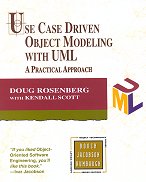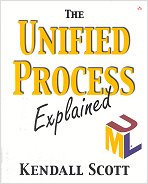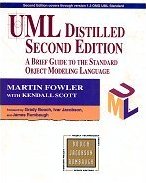The Rational Unified Process (RUP) has been widely adopted across the software industry.
However, many software developers and managers –
especially those working in medium-to-small development organizations –
are hesitant to delve into this seemingly complex and time-consuming topic.
The Unified Process Explained is a concise, accessible, and practical guide
that’s meant to help significantly shorten the learning curve for practitioners
unfamiliar with this methodology.
It explains the essentials of the Unified Process (the RUP’s 5 core elements),
guides you through the process step-by-step,
and shows how you can put the methodology to work on your next project.
The book starts with a useful overview of the history, motivation, key concepts,
and terminology of the Unified Process.
The author then details the five pillars of development:
requirements, analysis, design, implementation, and test workflows.
In addition, the book enumerates the four phases of Unified Process development:
inception, elaboration, construction, and transition;
and it shows how the workflows are integrated into these phases.
In laying out the details of this integration, the book illustrates
the Unified Process’s most useful feature – its iterative nature.
With this book as your guide, you will gain an understanding of
important concepts and activities such as:
• Iterations and increments
• Business and domain modeling
• Identifying actors and use cases
• Prototyping the user interface
• Robustness analysis
• Design and deployment models
• Statechart and activity diagrams
• Implementation models
A large-scale example of an Internet bookstore runs throughout the book
to illustrate concepts and techniques.
The industry-standard Unified Modeling Language is used to express structure and function.
The Unified Process Explained demystifies this valuable methodology
and will lead you on your way to successfully applying the Rational Unified Process.


